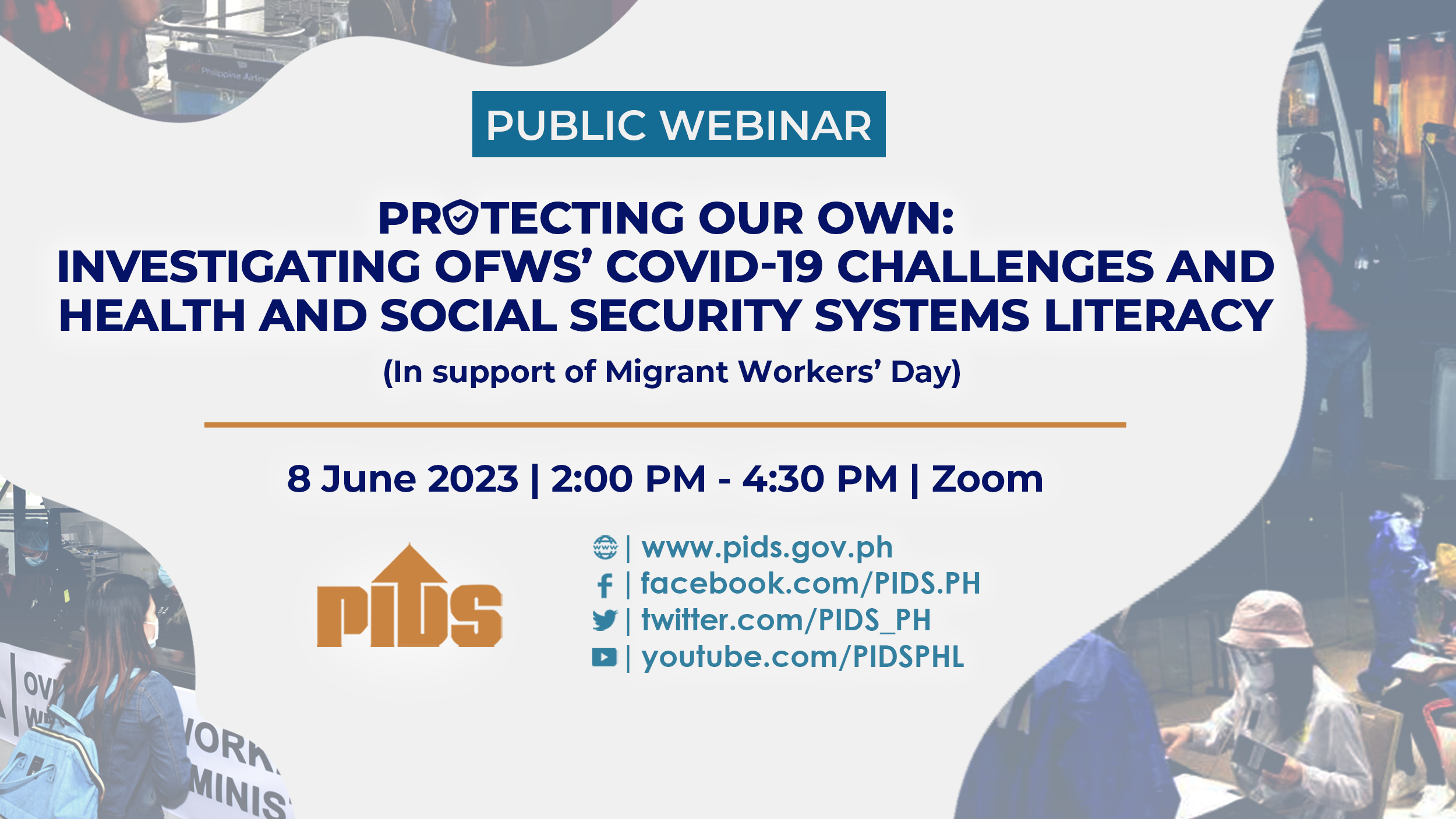THE lack of insurance coverage of unemployed Filipinos, who were working mainly in the informal sector, may have caused them to suffer more during the pandemic and increased poverty nationwide, according to a local economist.
In a chapter in the Labor Market Implications of the Covid-19 Pandemic in the Philippines book recently launched by the Bangko Sentral ng Pilipinas (BSP), Ateneo de Manila University Associate Professor Geoffrey Ducanes said the pandemic reversed the gains of the past 15 years to cut unemployment in the country.
During the lockdowns, Ducanes said, millions suffered because they had nowhere to turn to help them survive an average of 3 to 4.5 weeks of unemployment. Given this and to prepare for future crises, the government can consider giving these Filipinos insurance coverage during shorter periods of unemployment.
“Outside of crisis situations such as the pandemic, the unemployment insurance would cover a period of between three and 4.5 weeks, equivalent, respectively, to the median and mean amount of time the textbook unemployed spend looking for work,” Ducanes said. “Many of those who lost employment have jobs in the informal sector and were thus unlikely to be members of the social security system.”
Ducanes recommended that the government examine successful social insurance coverage in other countries in a bid to expand unemployment insurance for informal sector workers.
This could also be accompanied by efforts to simplify and incentivize government registration for unregistered micro, small, and medium enterprises (MSMEs), as well as “subsidizing contributions for informal sector workers with earnings below a certain threshold.”
“In case of a similar crisis in the future necessitating a similar type of hard lockdown and forcing many people into involuntary unemployment, the unemployment insurance should cover the period for which the hard lockdown is in place,” Ducanes said.
Based on previous research, Ducanes said there were 11 million households or 46 percent of total households in the country during the pandemic that did not have a member who was engaged in paid work in April 2020.
Ducanes also said there were 12.5 million more workers in April 2020 who reported having a job but having worked zero hours in the reference week.
Most of these workers, he said, could also be considered unemployed, especially those whose jobs require doing actual work before they are paid.
The country’s employment situation, particularly in the second quarter of 2020 when the unemployment rate reached 17.7 percent, was the most dire compared to its neighbors.
Ducanes noted that the unemployment rate in the Philippines increased by 12.3 percentage points, while its neighbors like Malaysia only saw its unemployment rate increase by 1.6 percentage points.
Thailand and Vietnam also saw their unemployment rates increase but only by less than 1 percentage point at 0.4 percentage points and 0.9 percentage points, respectively.
“These differences in the impact on unemployment cannot be explained by output decline alone. Although Philippine GDP in the second quarter of 2020 fell by a historic 16.9 percent year-on-year, Malaysia’s GDP fell by an even bigger 17.1 percent in the same period, and Thailand’s GDP also fell by a substantial 12.3 percent,” Ducanes said. “Some of the differences can probably be accounted for by variation in the level of employment-retention support provided by the different countries.”
In his opening remarks at the book launch, BSP Governor Felipe M. Medalla underscored that a lot of information could still be derived from the country’s pandemic experience.
“Much remains to be learned about the economic implications of Covid-19 pandemic not just in the labor market, but as I already said, [also in] the development of human capital,” Medalla said.
According to former Socioeconomic Planning Secretary Dante Canlas, labor economics has been evolving and has been fine-tuned to serve public policy objectives, including the conduct of monetary policy.
The publication presents different mechanisms by which the health crisis has affected various aspects of the labor market, including employment, labor productivity, wages, human capital investment, and consumption and saving.
Besides the pandemic’s impact on the labor sector, the book tackles policy coordination among monetary, financial, and fiscal authorities, and new organizing frameworks and econometric methods that support the understanding of the operations of labor markets.
“It was an opportunity for me to think about emerging policies and strategies geared toward full employment,” Canlas said.
The 400-page book features 15 chapters written by economic experts and public policy officials, including former Socioeconomic Planning Secretary and University of the Philippines (UP) School of Economics Professorial Lecturer Dr. Emmanuel F. Esguerra, former BSP Deputy Governor and Head of the BSP Research Academy (BRAc) Dr. Maria Almasara Cyd N. Tuano-Amador, and Philippine Institute for Development Studies (PIDS) President Dr. Aniceto C. Orbeta Jr.
Other experts who wrote chapters in the book were professors from the UP School of Economics (UPSE) and Ateneo de Manila University (ADMU), and research fellows from the PIDS.











